Drilling Apparatus Item Number: E2072-0 from the National Museum of Natural History
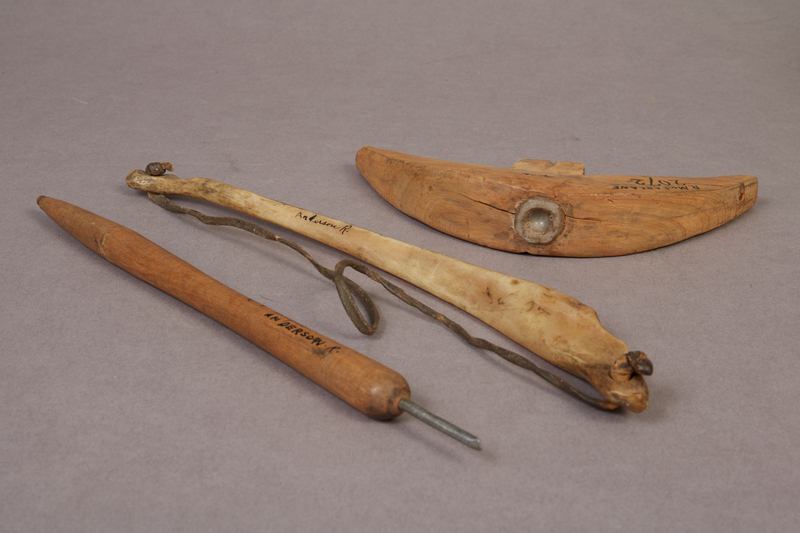
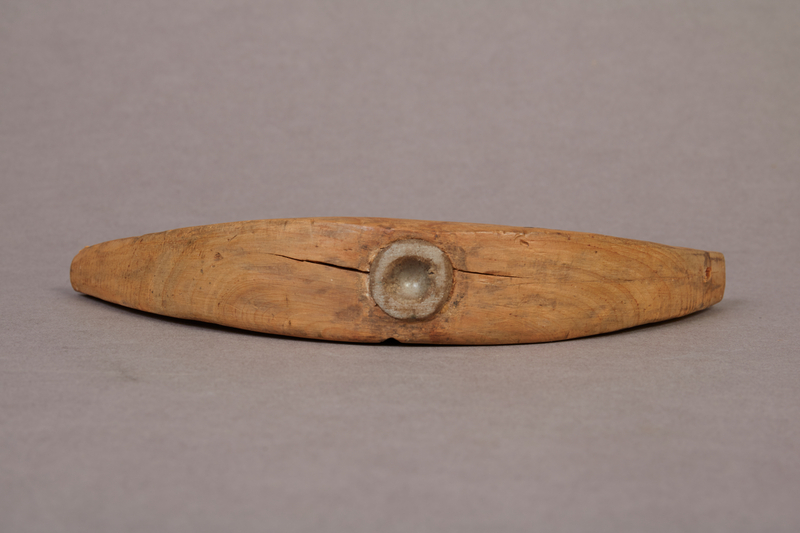
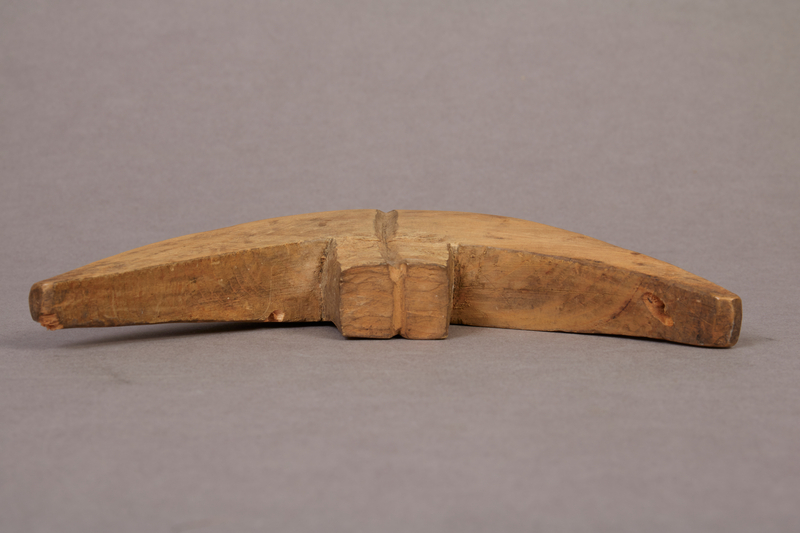
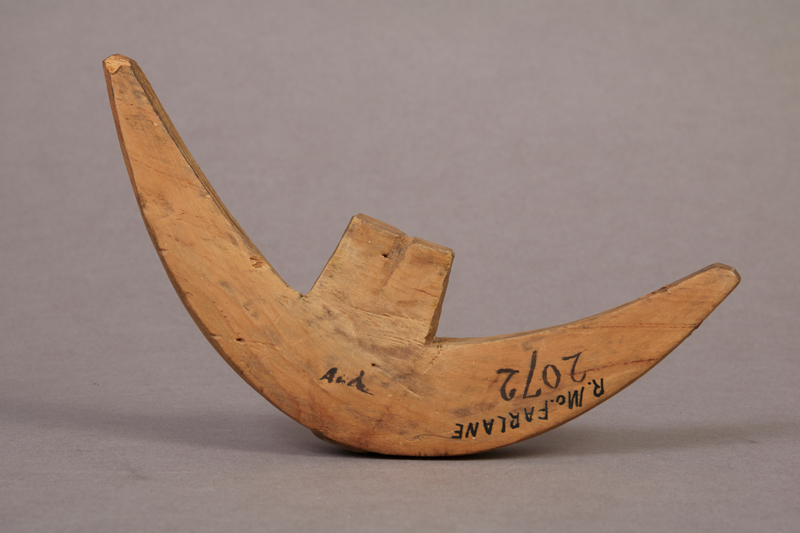

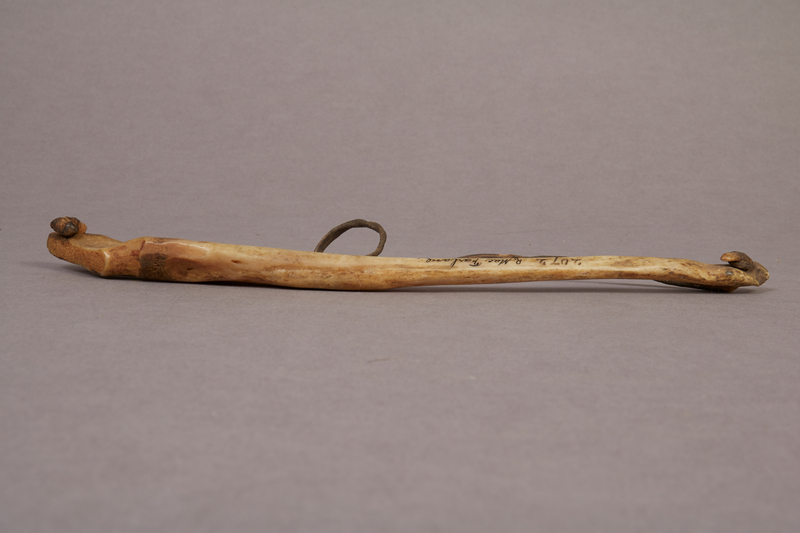
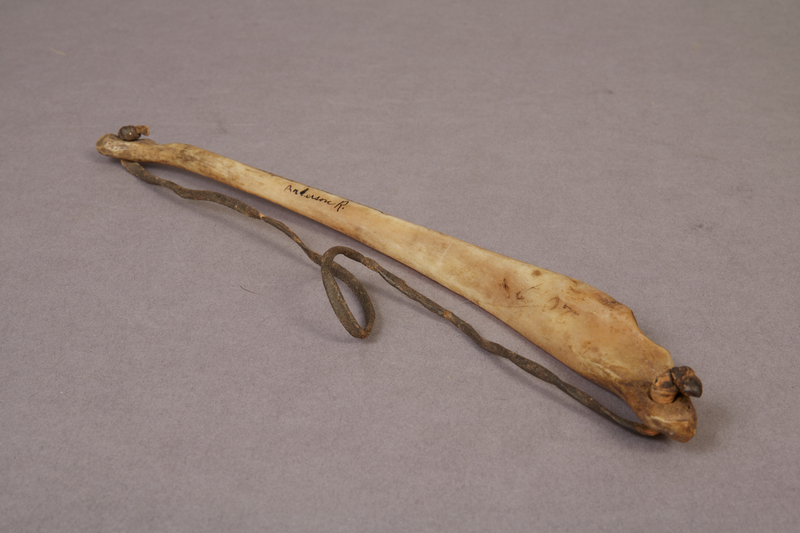

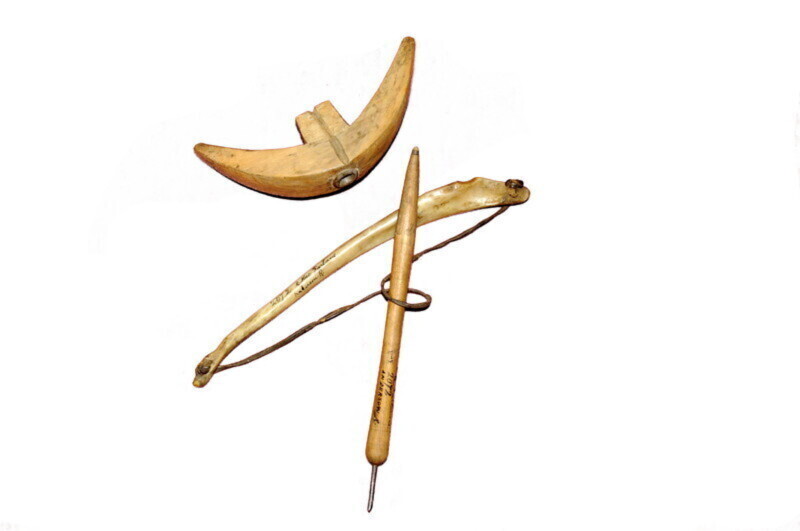

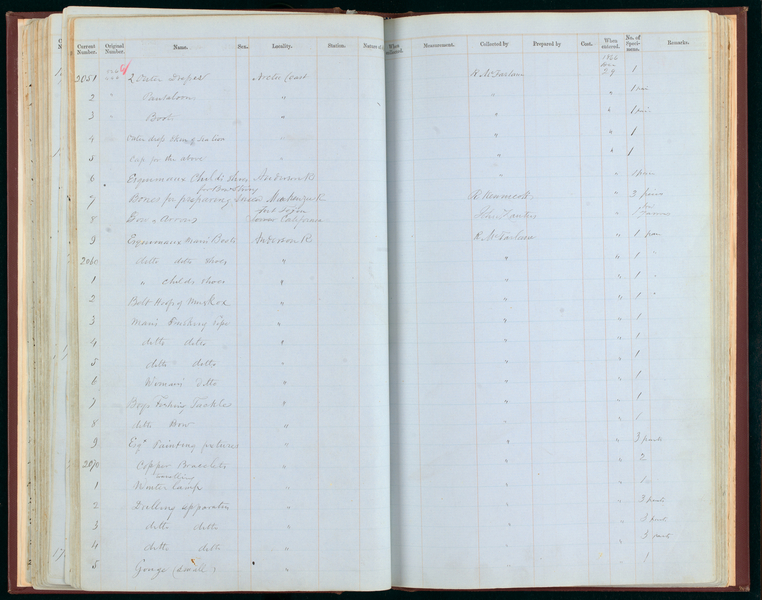

Notes
FROM CARD: "3 PARTS EACH. 1 DRILL."Source of the information below: Inuvialuit Pitqusiit Inuuniarutait: Inuvialuit Living History, The MacFarlane Collection website, by the Inuvialuit Cultural Resource Centre (ICRC), Inuvik, N.W.T., Canada (website credits here http://www.inuvialuitlivinghistory.ca/posts/12 ), entry on this artifact http://www.inuvialuitlivinghistory.ca/items/81 , retrieved 12-30-2019: This is a bow drill set consisting of a mouthpiece, spindle and bow. The mouthpiece has been carved from a single piece of wood. It has a square section that was held between the teeth, flanges on each side that would have rested against the cheeks, and a bearing made of stone with a hole to receive the drill spindle inset into the top of the arch. The spindle shaft is made from wood. It narrows toward the end that was inserted into the bearing of the mouthpiece, and is slightly constricted at the mid-point where the thong of the bow would have been wrapped around it. An iron drill bit, possibly a reworked nail, has been inserted into end of the spindle. The end of the spindle near the bit end has two sets of three incised lines encircling the shaft. The bow is made from a rib. It has a drilled hole at both ends for attaching a hide thong. More information here: http://www.inuvialuitlivinghistory.ca/item_types/20: The bow drills in the MacFarlane Collection were used for boring holes into wood, antler, bone and ivory. The drill spindle (shaft) has a bit at one end, and the other end is shaped to fit into a bearing that is held between the teeth. The spindle is rotated by wrapping a slack thong attached at each end of a drill bow around it, and moving the bow back and forth. Ancestral Inuvialuit also used another type of bow drill for starting fires.
Item History
- Made in Northwest Territories, Canada
- Collected in Northwest Territories, Canada
- Received from Roderick R. MacFarlane on December 21, 1866
Who
- Culture
- Eskimo, Inuit and Inuvialuk
- Received from
- Roderick R. MacFarlane
Where
- Holding Institution
- National Museum of Natural History
- Made in
- Northwest Territories, Canada
- Collected in
- Northwest Territories, Canada
When
- Acquisition Date
- on December 21, 1866
Other
- Accession Number
- 66A00090